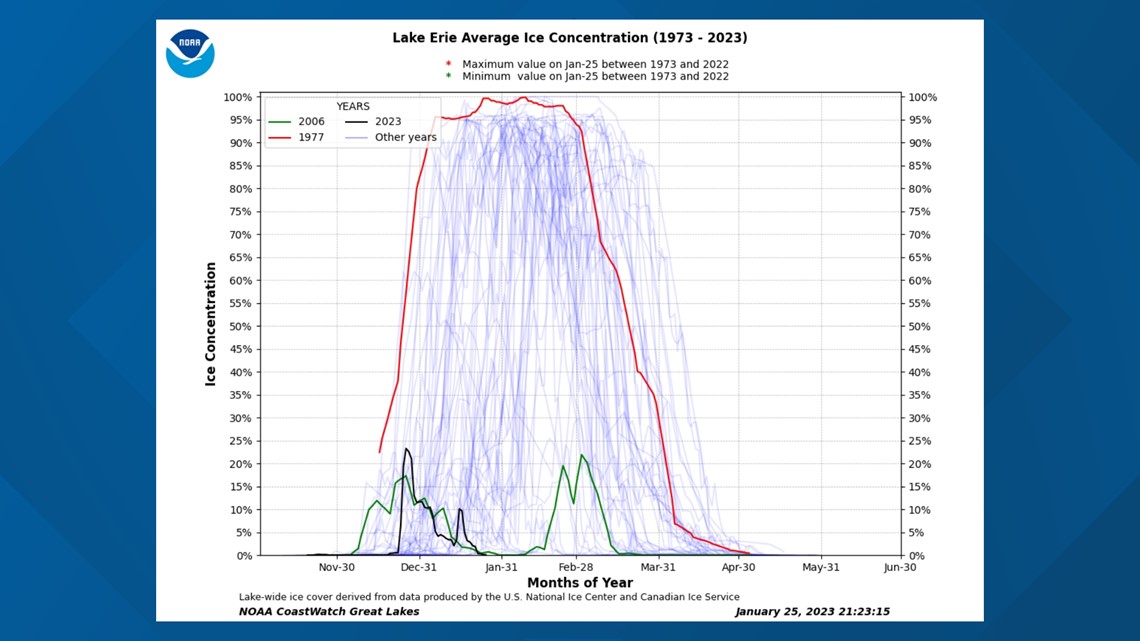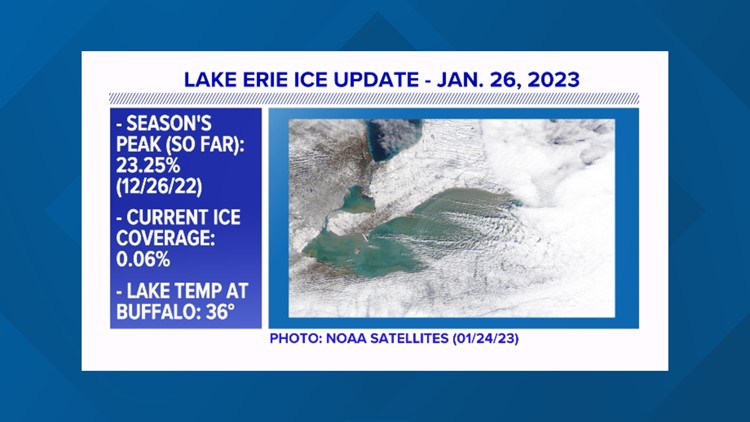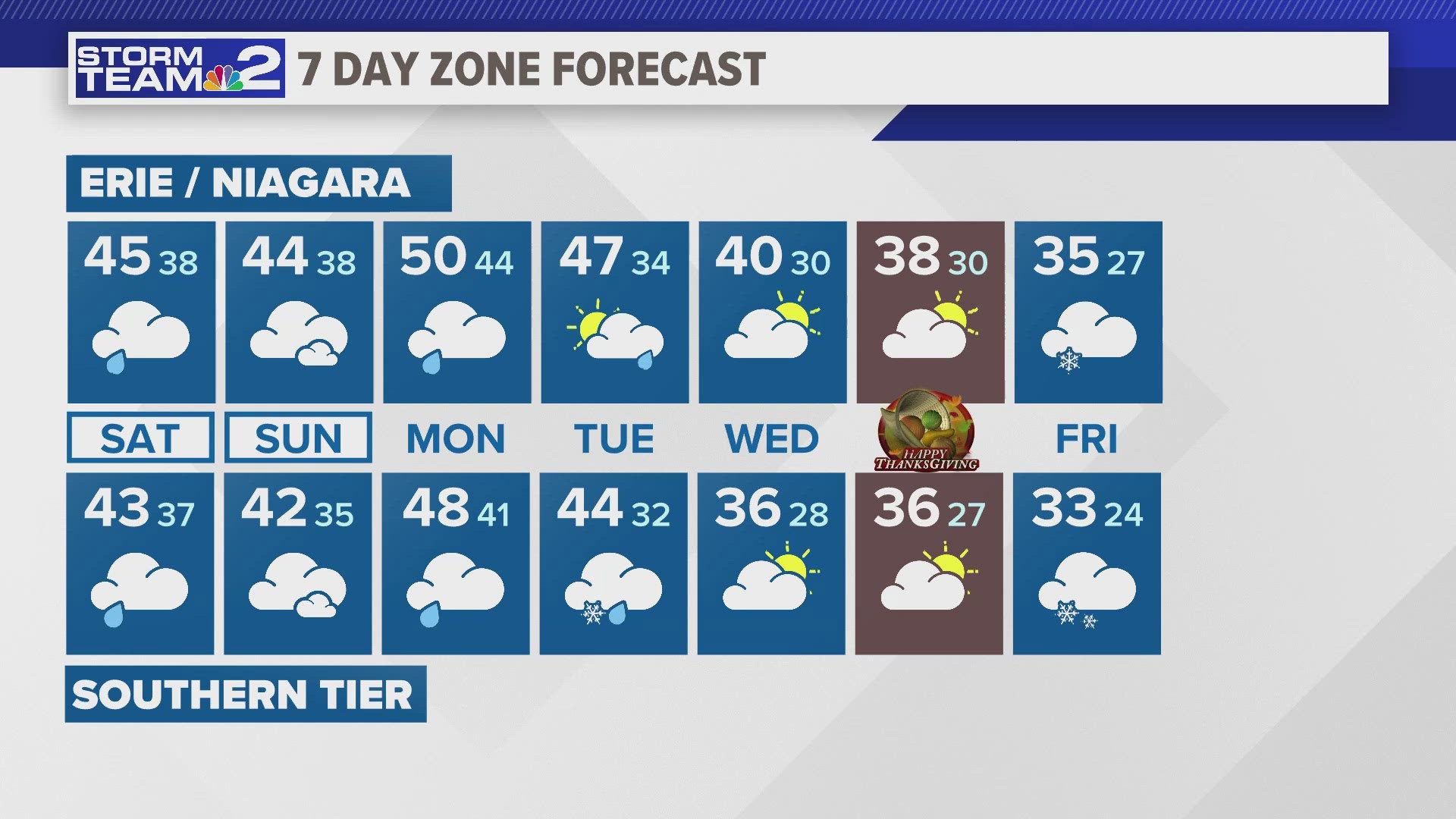BUFFALO, N.Y. — With air temperatures remaining at average or slightly above for much of the month of January, there has been little to no ice development on Lake Erie and much of the Great Lakes this month.
In fact, it's just the opposite as lake ice coverage continues to decline towards the end of the month.
As of Jan. 26, there is an ice concentration of only 0.06 percent on Lake Erie. That's a weekly decline of just under 10 percent, which may not seem like much, but it is considering ice coverage went from little to now almost now. The lake temperature near Buffalo did go down by a degree or two, now sitting at 36 degrees.
This season Lake Erie experienced a peak ice coverage (so far) of 23.25 percent. This after the winter storm that brought the Blizzard of 2022. But Lake Erie's ice coverage has slowly declined since and is now back to nearly zero.


For the Great Lakes as a whole, total ice concentration is just under 5 percent. The ice coverage for the Great Lakes has been fluctuating around that 5 percent number for the two weeks. But with the current ice coverage at 4.61 percent on Jan. 26, that's one of the lowest measurements for this time of year on record.
There is some hope on the horizon though with the chance for a stretch of colder temperatures next week for the end of January and early February. Expect to see some new ice development late next week and in early February, but no telling how much and if it will stick around.
It’s around this time of year when many Western New Yorkers start to monitor Lake Erie for ice. Whether they're hoping that it's development will limit the lake effect snow machine or checking in on a seasonal staple for the region, it's around this time of year when Lake Erie and the entire Great Lakes region as a whole typically starts to see an increase in ice formation.



